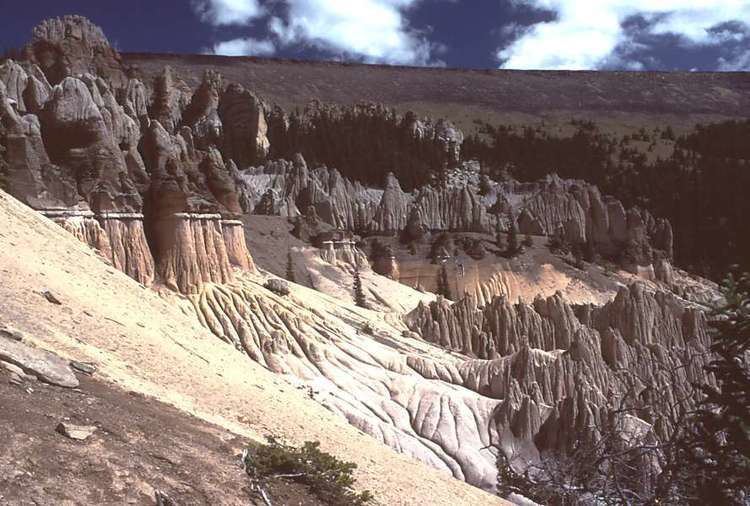 | ||
Volcano Multiple cumulative events Date 25-40 million years ago Impact Deposited vast swatches of ignimbrite across the western United States | ||
The Mid-Tertiary ignimbrite flare-up, was a dramatic period of volcanic eruptions in mid-Cenozoic time, approximately 25-40 million years ago, centered in the western United States. These eruptions are seen today as deposits of ignimbrite, the pyroclastic material that was laid down from these eruptions.
Contents
Overview
There are countless eruptions within the flare-up; the total volume includes 5x105 km3 of ash flow tuff and 5x106 km3 of intermediate and silicic lava. This amount is on par for some of the largest non-explosive volcanic provinces (see World's largest eruptions). For reference, the 1980 eruption of Mt. St. Helens was about 1 km3. The largest eruption on the flare-up, and also the largest explosive eruption ever known, was the Fish Canyon tuff in southwest Colorado. Its volume alone is 5,000 km3. The three primary volcanic centers of the flare-up are the Central Nevada volcanic field of central Nevada, Indian Peak volcanic field of eastern Nevada/western Utah, and the San Juan volcanic field in Colorado.
Cause
The primary tectonic driving force behind this explosive volcanic activity is slab roll back. During the Laramide orogeny, the subducting Farallon Plate subducted at a very shallow angle. When this stopped, the mantle wedge was opened up, and the result was the flare-up. The specifics of this opening, including possible windows or buckling of the plate, can explain specific volcanic trends within the flare-up.
